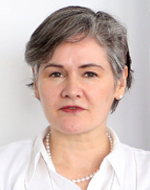Venue: Astana Park inn hotel Selecting the ‘Optimum’ Pit” Selecting the optimum pit shell as the basis for design is often not as straightforward as it appears, with a number of pitfalls for the unwary. This discussion covers aspects related to risk and return, the ‘hill of value’, value and size plateaux, incremental and average strip ratios, inflexions in value versus shell size. The process is not simply the case of selecting the optimum value shell. The choice inherently involves consideration of corporate objectives, risk minimisation, variance on translation to design, optimising value and/or mine life and leaving open optionality for future exploration and underground development. Case study examples will be highlighted that illustrate what to do and what not to do. “Sorting the Chaff from the Wheat – Mining Dilution and Loss – Misconceptions, Miscalculations and Lies” Mining projects often assume nominal or benchmark estimates for dilution and loss that turn out to be quite different in practice, often obscured by either a lack or inaccuracy in mine reconciliation. This discussion focuses on some of the modern techniques adopted for more reliable evaluation of these modifying factors, supported by case study examples. It will cover a variety of aspects including techniques; industry benchmarks; halo and mixing zones; block regularisation and the selective mining unit (SMU); equipment size considerations; ore contact surface roughness/amplitude; mining accuracy; orebody dip/geometry, continuity, style of mineralization (eg. vein, stockwork, seam); modelling techniques (regularisation, dilution halo, perimeter to area and volume to surface area ratios), assessing dilutant grades; modern mineable resource optimisation and mineable shape optimisation (MRO/MSO) techniques for open pit and underground; internal/external or planned/unplanned or planned/operational dilution and loss; and, the mine reconciliation interface. Case studies will be presented highlighting modern techniques and industry faux pas. “Adding Value through Appropriate Integration of Hydrogeology and Rock Mechanics Studies” Pit slope optimisation, and through this the pit design, should be treated as an optimisation cycle in which iterative processes and data exchange between the mine design team, geotechnical engineers and hydrogeologists should take place to try and achieve the best pit design for a project, in accordance with corporate objectives. Often this combines consideration of aspects such as pit value, mine life and further exploration potential. The project risks increase with pit depth, such that minor changes in slope angles can be the difference between make or break for a project. Nowadays, new technologies are available for adding value to integrated studies and the benefits of early stage geotechnical and hydrogeological data capture can help identify areas of risk in the early stages of project development and allow a more focused and detailed investigation to be undertaken to maximise the reliability of the data, minimise the risk and optimise the overall project returns. Current trends in information technologies have not surpassed mining industry, bringing a variety of options to collect, process and analyze different kinds of data generated at all development stages of the projects. The presentation will concentrate on some recent achievements in assessing geotechnical risk factors in underground mines and visualizing hazards in 4 D format (spacial and temporal representation) as well as monitoring possible influence of mining operations on the surface infrastructure in order to reduce possible impact and make stakeholders aware of the actions needed. Underground part will cover possible applications of state-of-the art geotechnical hazard management system developed by Mira Geoscience (Canada) and applied successfully in major underground mines to produce quantitative forecast of possible geotechnical risk. Surface part will be based on DMT own development allowing timely recognition of changes in the surface environment around the mine and reacting in appropriate manner. Organised by the Republican Association of Mining and Metallurgical Enterprises (AGMP) – Development of local personnel: key challenges and solutions;
Organiser: SRK Consulting

SRK Consulting (UK) Ltd
Consultant (Mining Engineering)
Organiser: SRK Consulting

SRK Consulting (UK) Ltd
Principal Consultant
Organiser: SRK Consulting

SRK Consulting (UK) Ltd
Senior Geotechnical Engineer
Organiser: DMT GmbH & Co. KG
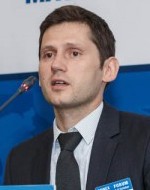
DMT
Head of sales
– Training and retraining programs;
– Consolidation of the mining companies in matters of training and retraining;
– Enhancing the prestige of employment in Mining and Metals sector;
– New training and re-training technologies.
Organiser: Republican Association of Mining and Metallurgical Enterprises

Bakhyt Manasbayeva
Republican Association of Mining and Mining and Metallurgical Enterprises (AGMP)
Deputy Executive Director
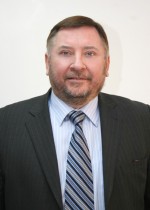
Republican Association of Mining and Metallurgical Enterprises
Executive Director
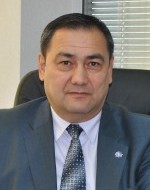
ERG "Research and Development Engineering Center”
Director of the Mining Department
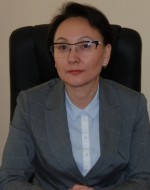
Ministry of Education and Science of the Republic of Kazakhstan
Director of the Department of Professional, Technical and Post-Secondary Education
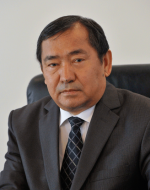
Kasipkor
Chairman of the Board
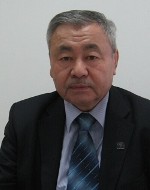
Republican Association of Mining and Metallurgical Enterprises (AGMP)
First Deputy Executive Director

The National Chamber of Entrepreneurs of the Republic Kazakhstan "Atameken"
Director, Department of Development of Human Capital

Polymetal Eurasia LLP
Human Resources Director

Kazakhmys
Head of training and development department

School of Mining and Geosciences, Nazarbayev University
Dean and Professor
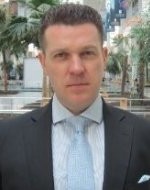
School of Mining and Geosciences, Nazarbayev University
Associate Professor
Venue: Radisson Astana Hotel Session themes: Session themes: Session themes: Session themes: MineVenture invites junior mining companies, entrepreneurs and innovators to present venture projects in the following categories: Prospecting and exploration Projects for the study and exploration of mineral deposits in the Republic of Kazakhstan, Kyrgyz Republic, Tajikistan and Uzbekistan Breakthrough technology and innovation Modernisation or development of new technology or equipment for the discovery, extraction, enrichment and processing of ores and minerals. New technology for improving production efficiency or reducing costs. JURY PANEL Tobyl Zhylkybayev, President, Centras Venture Fund Nikolai Yenshin, General Manager, SRK Consulting (Kazakhstan) Ltd Saule Urazayeva, Executive director, KAZRC Association Phil Newall, Managing Director, Wardell Armstrong International Ltd Alexander Lopatnikov, Managing Director, AAR Stefan Scholz, Managing Partner, ScholzvonGleich VENTURE AND INVESTMENT PROJECTS
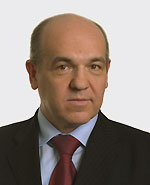
Alexander Lopatnikov
American Appraisal
Managing Director

European Bank for Reconstruction and Development
Principal Banker, Energy and Natural Resources, Russia, Caucasus and Central Asia

Wardell Armstrong International Ltd
Managing Director

American Appraisal
Managing Director
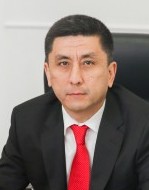
Polymetal Eurasia
General Director
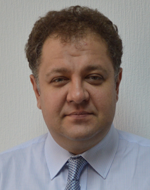
Nikolai Yenshin
SRK Consulting (Kazakhstan) Ltd
General Manager

Republican Association of Mining and Metallurgical Enterprises
Executive Director

The State Committee of Industry, Energy and Subsoil use
Head of Department of subsoil use policy
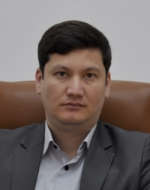
State Enterprise «State Geological Information Center»
Chief Executive Officer
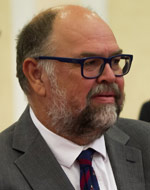
AMC Consultants
Director, Principal Mining Engineer

KAZRC Association
Executive director

Alexander Lopatnikov
American Appraisal
Managing Director

Bryanston Resources
Senior Project Manager

S&P Global Market Intelligence
Senior Research Analyst

Eurasian Development Bank
Managing Director
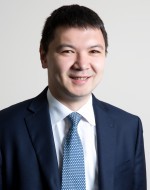
CSA Global
Director – Russia/CIS

Centras Venture Fund
President
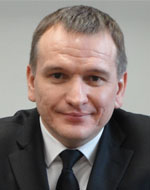
Pavel Shevchenko
IMC Montan
Project Manager. Mining Engineer
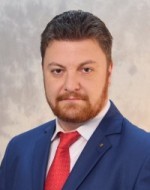
EY
Sustainability Services Leader in Central Asia, Ukraine and Belarus

Mining Commodities Consulting Ltd
Managing Partner
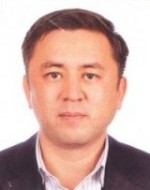
Zhairem GOK
Executive Director for Production

SRK Consulting (North America)
Group Chairman and Corporate Consultant
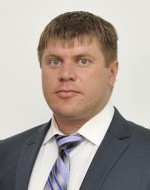
Kounrad Copper Company LLP / Central Asia Metals plc
Chief Engineer

DMT
Innovation Manager
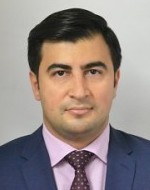
ThoroughTec Simulation LLC.
General Director

IntelliSense.io
CEO / Founder

Nikolai Yenshin
SRK Consulting (Kazakhstan) Ltd
General Manager
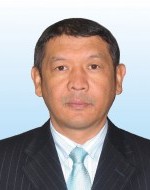
JSC "Volkovgeologia"
Adviser to the Chairman of the Board

Atygai Gold Mining
Deputy Director of technology and mining

TOO “Balkhash Prospecting company”
Director

Research institute "B-PROJECT" LLP
DirectorOrganiser: Ministry for Investment and Development of the Republic of Kazakhstan
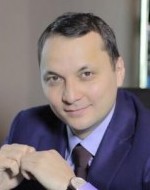
Timur Toktabayev
Ministry for Investments and Development of the Republic of Kazakhstan
Vice Minister for Investments and Development of the Republic of Kazakhstan
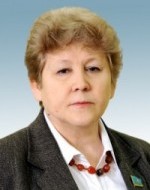
Majilis Parliament of the Republic of Kazakhstan
MP, Secretary of the Committee on Ecology and Nature Management
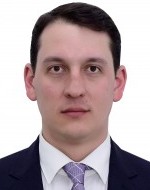
Ministry of Investment and Development of the Republic of Kazakhstan
Director of the Subsoil Use Management Department

Republican Association of Mining and Metallurgical Enterprises
Executive Director
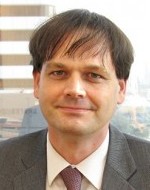
GIZ (German International Cooperation)
Programme Director "Mineral Resources for Development"

Eurasian Group
Executive Director for Legal Affairs
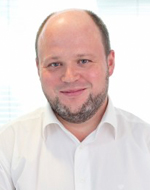
CSA Global Pty Ltd.
Principal Resource Geologist
Venue: Radisson Astana Hotel
Session themes:
- Managing the operational profitability of a gold mine – technological challenges and solutions
- Reducing gold production costs and capital expenditures (transport, spare parts, fuel, electricity and personnel costs optimisation).
- Low cost gold production – innovative methods and technologies of ore extraction and processing.
- Development and introduction of new energy efficient technologies for gold and metals extraction.
- Advanced methods of ore preparation and grade quality control.
- Technologies of processing refractory ores.
- Turning gold mine waste into a secondary resource.

Mikhail Leskov
Russian Society of Experts for Sub-soil Use/OERN
Head of Section for Evaluation and Valuation for Mineral Properties
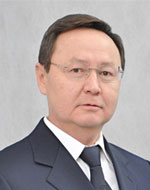
RG Gold LLP
CEO

Outotec Kazakhstan
Regional Representative of Outotec in Uzbekistan

SRK Consulting (UK)
Senior Consultant (Mining Geology)

EZOCM-Engineering
General Director

JSC “Krastsvetmet"
Deputy Director General, Refinery
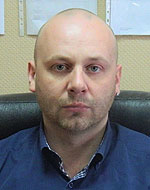
Anakon Group
Enrichment Engineer
Session themes:
- Discovery of new deposits in Central Asia: prospects and challenges
- Big or economically viable? What types of new deposits companies are looking for?
- Creating result-oriented exploration programs – practical approaches and technologies
- Exploring from above: potential use of satellite imaging, airborne geophysical surveys and UAVs for increasing efficiency and cost-effectiveness for large-area surveyingTime is money: improving speed and accuracy of exploration with the aid of real-time and cloud base analytical solutions
- Application of 3D geological modelling systems for synergy between the interpretation of geological data and mine modelling construction
- Geochemical analysis of hidden ores

Antony Benham
IGS (International Geoscience Services) Ltd
Chief Operations Officer
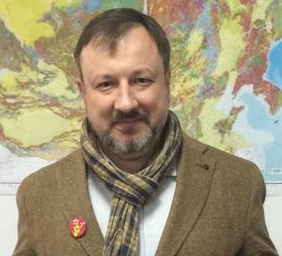
Kazzinc
Regional exploration manager

Natural History Museum
Head, Central Eurasian Mineral Studies and Research Leader
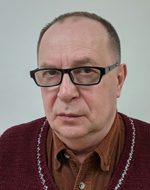
Phoenix Geophysics LTD
Vice-President

DMT GmbH & Co. KG
Geophysicist, Head of Department

DigitalGlobe
Principal Scientist
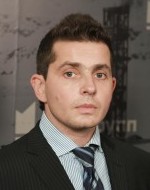
Aarhus geophysics
Senior geophysicist
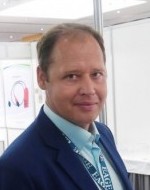
Gelios
General Director
MINE CLOSURE AND LAND RECLAMATION - NEW REGULATORY REQUIREMENTS
Session themes:
- A comparative overview of regulatory approaches to mine closure and land reclamation
- Mine site reclamation incentives.
- Preparing technical and social-economic plan of mine site closure and land reclamation.
- Financing Mine reclamation – borrowers and lenders’ perspectives.
- Rehabilitation of land after coal, copper, uranium and gold mining – case studies of successfully reclaimed mining sites.
- Reclamation of dump tailings – before and after case studies.
- Mine reclamation after natural disaster.
- Evaluating land productivity after reclamation

Jeff Parshley
SRK Consulting (North America)
Group Chairman and Corporate Consultant

SRK Consulting
Environmental Consultant
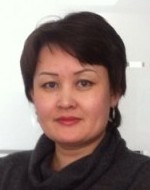
GIZ (German International Cooperation)
Technical Specialist
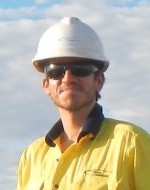
O'Kane Consultants
Director and Senior geo-environmental consultant
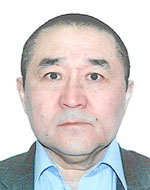
Orsu Metals Kazakhstan
General Director

SRK Consulting (North America)
Group Chairman and Corporate Consultant

Ministry of Investment and Development of the Republic of Kazakhstan
Director of the Subsoil Use Management Department
Finding the best possible technological solution for a mine planning, construction, modernisation or closure is a complex task and often involves analysis of alternative offers. Striving to achieve greater efficiency in knowledge exchange between the local mining companies and vendors the MINEX Central Asia forum is organising MineTech – an international competition of mining challenges and solutions.
The competition is designed around a win-win formula: the mining companies will get a wide spectrum of turnkey solutions from local and international providers. The vendors will have a chance to demonstrate the application of their products and technologies for resolving specific cases. The forum delegates will participate in lively discussions and learn about new technologies and solution.
REVIEW THE LIST OF ERG CHALLENGES here
PROPOSED SOLUTIONS
“Processing”
“Digital technologies”

Anton Roshchin
ERG Research and Development Engineering Centre
Chairman of the Board

Alexander Sorokin
Eurasia Group
Director of operational efficiency
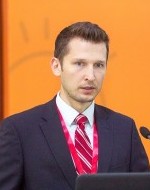
Sergey Opanasenko
Eurasia Group
Executive Director for Operational Efficiency and Innovation
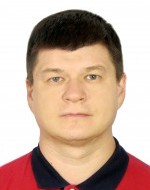
“REEF Centrifugal Technologies” LLP
Technical Director

SRK
Geochemist

Gamayun
Technology Director
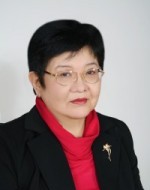
JSC "D.V.Sokolski Institute of fuel, catalysis and electrochemistry"
Head of the laboratory of catalytic synthesis
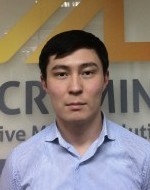
MICROMINE Central Asia
Pitram system specialist
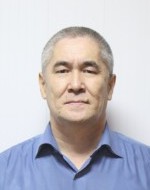
Institute of Space Techniques and Technology
Director

IntelliSense.io
CEO / Founder

DMT
Head of sales

Yandex Data Factory
Chief Operating Officer
Session themes:
- State and prospects of development of the world uranium industry
- Present and future of international cooperation in Kazakhstan’s uranium industry
- Uranium exploration program overview
- Challenges of roll-front exploration of uranium deposits
- Cost reduction methods – innovative technological solutions
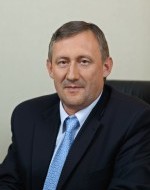
Alexander Boytsov
Uranium One Group
Director of Resources Development Program

KPMG
Partner, Head of Corporate Finance in Kazakhstan

Uranium One Group
Director of Resources Development Program
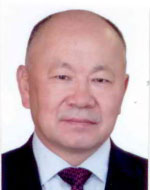
Kazatomprom
Chief director of production and NTC
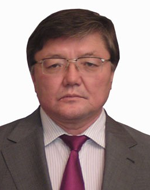
Volkovgeology
Chairman of the Board

ARMZ Uranium Holding Co. (JSC Atomredmetzoloto)
Director of development innovation and technology

CSA Global Pty Ltd.
Principal Resource Geologist
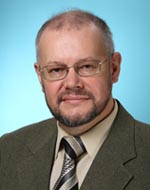
Seversk Technological Institute of the National Research Nuclear University
Deputy Head
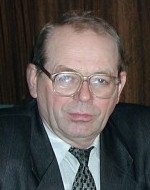
"All-Russian Research Institute of Mineral Resources" (VIMS)
General Director
Session themes:
- New projects: how to build on time and on budget?
- Integrating mine design solutions at the planning stage.
- Unified management systems for improving productivity and efficiency.
- A mine without borders: managing cross-border mining projects.
- Supplying and servicing mining enterprises – balancing costs and delivery terms.
- Outsourcing – benefits and wider implementation opportunities.
- Modular approach to mine construction and modernisation.

Nikolai Yenshin
SRK Consulting (Kazakhstan) Ltd
General Manager

Rostec-Business Development
Deputy Director General for Resource Management Projects
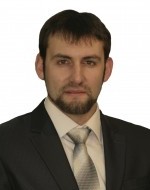
JSC "VIOGEM"
Deputy General Director
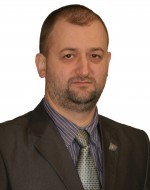
JSC "VIOGEM"
Head of the Laboratory of Geoinformation Systems


